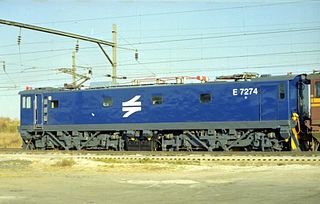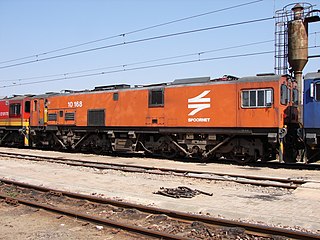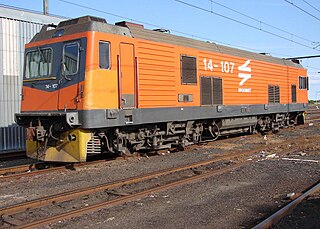
The Transnet Freight Rail Class 15E of 2010 is a South African electric locomotive.

The South African Railways Class 6E of 1970 was an electric locomotive.

The South African Railways Class 6E1, Series 1 of 1969 was an electric locomotive.

The South African Railways Class 6E1, Series 4 of 1973 was an electric locomotive.

The South African Railways Class 7E is an electric locomotive. South African Railways placed 100 Class 7E electric locomotives with a Co-Co wheel arrangement in service in 1978/79. They were the first 25 kV AC locomotives to enter service in South Africa.

The South African Railways Class 7E1 of 1980 is an electric locomotive.

The South African Railways Class 7E2, Series 1 is an electric locomotive. South African Railways placed 25 Class 7E2, Series 1 electric locomotives with a Co-Co wheel arrangement in service in 1982.

The Spoornet Class 7E4 of 2001 is a South African electric locomotive.

The South African Railways Class 7E3, Series 2 of 1984 is an electric locomotive.

The South African Railways Class 9E, Series 1 of 1978 is an electric locomotive.

The South African Railways Class 10E1, Series 1 of 1987 is an electric locomotive.

The Spoornet Class 10E1, Series 2 of 1990 is a South African electric locomotive.

The Spoornet Class 14E1 of 1994 was a South African electric locomotive.

The Spoornet Class 16E of 1990 was a South African electric locomotive.

The Spoornet Class 17E of 1993 was a South African electric locomotive.

The South African Railways Class 34-000 of 1971 is a diesel-electric locomotive.

The South African Railways Class 34-400 of 1973 is a diesel-electric locomotive.

The South African Railways Class 34-500 of 1974 is a diesel-electric locomotive.

The South African Railways Class 34–900 of 1980 is a diesel-electric locomotive.

The South African Railways Class 7E3, Series 1 of 1983 is an electric locomotive.























